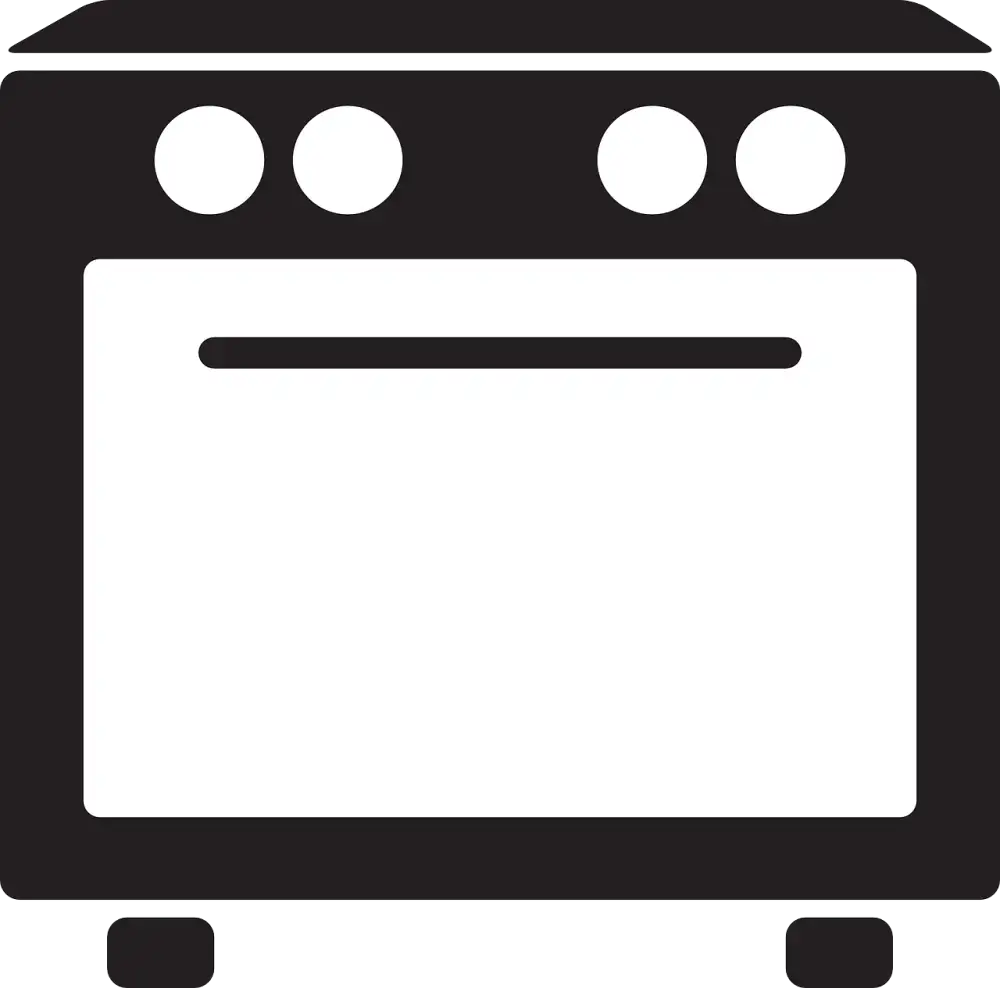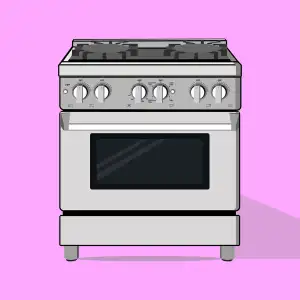Master the Art of Cooking with a Convection Oven: A Step-by-Step Guide for Home Chefs

- Understanding the Basics of a Convection Oven
- Preparing Your Convection Oven for Use
- Adjusting Cooking Times and Temperatures
- Utilizing the Convection Setting for Baking
- Mastering Roasting and Grilling in a Convection Oven
- Tips and Tricks for Successful Convection Oven Cooking
- Cleaning and Maintenance of Your Convection Oven
In the world of culinary arts, having the right equipment can make all the difference in creating mouthwatering dishes. One such appliance that has revolutionized the way we cook is the convection oven. With its ability to circulate hot air evenly throughout the cooking chamber, a convection oven ensures faster and more efficient cooking.
Unlike traditional ovens, which rely on radiant heat, convection ovens utilize a fan to distribute heat evenly. This results in shorter cooking times and more consistent results. Whether you are baking delicate pastries or roasting a succulent chicken, a convection oven can elevate your culinary creations to new heights.
But mastering the art of cooking with a convection oven requires understanding its basics, adjusting cooking times and temperatures, and utilizing its different settings for specific cooking techniques. In this step-by-step guide, we will explore everything you need to know about using a convection oven at home. So let's dive in and unlock the full potential of this magical appliance!
Understanding the Basics of a Convection Oven
A convection oven is a kitchen appliance that uses a fan and exhaust system to circulate hot air evenly throughout the cooking chamber. This creates a consistent temperature and allows for faster, more efficient cooking. Unlike traditional ovens, which rely on radiant heat from heating elements, convection ovens use both radiant heat and forced air to cook food.
The key feature of a convection oven is its fan, which helps to distribute the hot air evenly around the food. This ensures that every part of the dish receives the same amount of heat, resulting in even cooking and browning. The circulating air also helps to remove moisture from the surface of the food, creating a crispy exterior while keeping the interior moist and tender.
Convection ovens come in different types: full-size ovens built into kitchen cabinets, countertop models, and even combination microwave-convection ovens. Regardless of the type, they all work on the same principle of using airflow to cook food more efficiently.
By understanding how a convection oven works, you can take advantage of its features to achieve better results in your cooking. Whether you're baking delicate pastries or roasting a succulent chicken, mastering the basics will allow you to unlock the full potential of your convection oven.
Preparing Your Convection Oven for Use
Before you start cooking with your convection oven, it's important to properly prepare it for use. Follow these steps to ensure optimal performance:
1. Read the manual: Familiarize yourself with the specific instructions and features of your convection oven. Each model may have different settings and functions.
2. Clean the interior: Remove any racks or accessories from the oven and wipe down the interior with a damp cloth. This will remove any dust or debris that may have accumulated.
3. Check the seals: Inspect the door seals for any signs of wear or damage. A tight seal is essential for proper heat circulation in a convection oven.
4. Preheat the oven: Set your convection oven to preheat at the desired temperature before cooking. This allows it to reach the optimal temperature for even cooking.
5. Adjust racks and trays: Place racks and trays in their designated positions according to the manufacturer's instructions. This ensures proper airflow and even cooking results.
By taking these simple steps, you'll be ready to make the most of your convection oven and create delicious meals with ease.
Adjusting Cooking Times and Temperatures
One of the key advantages of cooking with a convection oven is its ability to cook food faster and more evenly. However, this also means that you need to make adjustments to your cooking times and temperatures compared to traditional ovens.
When using a convection oven, it's generally recommended to reduce the cooking temperature by about 25 degrees Fahrenheit (or 15 degrees Celsius) compared to what the recipe suggests. This is because the hot air circulation in a convection oven cooks food faster.
Additionally, you should also reduce the cooking time by about 25% when using a convection oven. For example, if a recipe calls for baking something for 30 minutes in a regular oven, you would only need to bake it for around 22-23 minutes in a convection oven.
It's important to keep an eye on your food while it's cooking in a convection oven as it may cook faster than expected. Use visual cues such as browning or internal temperature readings to determine when your dish is done.
By adjusting your cooking times and temperatures accordingly, you'll be able to achieve perfectly cooked meals every time with your convection oven.
Utilizing the Convection Setting for Baking
One of the greatest advantages of a convection oven is its ability to bake with precision. The convection setting circulates hot air evenly throughout the oven, resulting in perfectly baked goods every time. Here's how you can make the most out of this feature:
1. Adjusting Temperatures: When using the convection setting, it's important to lower the temperature by about 25 degrees Fahrenheit compared to traditional baking recipes. This is because the circulating air cooks food faster and more efficiently.
2. Using Shallow Pans: Opt for shallow pans or baking sheets when baking in a convection oven. This allows for better airflow and ensures that your baked goods are evenly cooked.
3. Monitoring Baking Time: Keep a close eye on your baked goods as they cook faster in a convection oven. Start checking for doneness a few minutes earlier than recommended in your recipe, and adjust accordingly.
4. Rotating Baking Sheets: To ensure even browning, rotate your baking sheets halfway through the cooking process. This helps prevent any hot spots that may occur due to the circulating air.
5. Avoid Overcrowding: Give your baked goods enough space to allow proper circulation of hot air. Overcrowding can lead to uneven cooking and result in undercooked or burnt areas.
By following these tips, you'll be able to achieve bakery-quality results with your convection oven's baking function. Experiment with different recipes and enjoy perfectly golden crusts, moist cakes, and evenly risen breads that will impress even the most discerning palates!
Mastering Roasting and Grilling in a Convection Oven
Roasting and grilling are popular cooking techniques that can be enhanced by using a convection oven. The circulating hot air in a convection oven ensures even cooking and browning, resulting in deliciously crispy and succulent dishes.
To master roasting, start by preheating your convection oven to the desired temperature. Season your meat or vegetables with your favorite herbs and spices, then place them on a roasting rack or baking sheet. The elevated position allows the hot air to circulate around the food, ensuring even cooking.
For grilling, use the broil setting on your convection oven. Preheat the oven and adjust the rack to the desired distance from the broiler element. Place your marinated meat or vegetables on a broiling pan or directly on the rack. Keep an eye on them as they cook quickly under high heat.
Remember to flip your food halfway through cooking to ensure even browning and doneness. Use a meat thermometer to check for internal temperatures for meats.
Experiment with different marinades, rubs, and glazes to add flavor to your roasted or grilled dishes. Don't be afraid to get creative with seasonings like garlic, rosemary, paprika, or soy sauce.
Keep in mind that cooking times may vary depending on the size and thickness of your ingredients. It's always best to refer to recipes as a starting point and make adjustments based on personal preferences.
By mastering roasting and grilling in a convection oven, you'll be able to create restaurant-quality dishes right at home. The combination of circulating hot air and precise temperature control will elevate your culinary skills and impress family and friends with perfectly cooked meals every time.
Tips and Tricks for Successful Convection Oven Cooking
1. Use the Right Cookware: Opt for shallow, metal pans to promote better airflow and even cooking. Avoid using glass or ceramic dishes as they may hinder the convection process.
2. Preheat Properly: Always preheat your convection oven before cooking. This ensures that the oven reaches the desired temperature and helps in achieving consistent results.
3. Rotate and Rearrange: To ensure even browning, rotate your dishes halfway through the cooking time. Additionally, consider rearranging the racks to prevent any hot spots in the oven.
4. Reduce Cooking Time: Convection ovens cook food faster than traditional ovens due to their circulating heat. To avoid overcooking, reduce the suggested cooking time by 25% or lower the temperature slightly.
5. Keep an Eye on Your Food: Due to faster cooking times, it's essential to monitor your food closely to prevent burning or drying out. Consider using a timer or setting a reminder to check on your dish periodically.
6. Avoid Overcrowding: Allow enough space between dishes for proper air circulation, ensuring that each item cooks evenly. Overcrowding can lead to uneven results and longer cooking times.
7. Adjust Seasonings: The circulating heat in a convection oven can intensify flavors quickly. Be mindful of this when seasoning your dishes and adjust accordingly to avoid overpowering flavors.
8. Use Lower Heat for Delicate Items: When baking delicate items like pastries or cakes, lower the oven temperature by 25°F (15°C) compared to what is recommended for conventional baking.
By following these tips and tricks, you'll be able to harness the full potential of your convection oven and create delicious meals with ease and precision.
Cleaning and Maintenance of Your Convection Oven
Cleaning and maintaining your convection oven is essential to ensure its longevity and optimal performance. Here are some tips to keep your oven in top shape:
1. Regular Cleaning: After each use, wipe down the interior of the oven with a damp cloth or sponge to remove any food residue or spills. Avoid using abrasive cleaners that can damage the oven's surface.
2. Deep Cleaning: Every few months, give your convection oven a thorough cleaning. Remove the racks and soak them in warm soapy water. Use a non-abrasive cleaner to scrub away any stubborn stains or grease buildup inside the oven.
3. Clean the Fan and Vent: The fan and vent of your convection oven can accumulate dust and debris over time, affecting its efficiency. Use a soft brush or vacuum attachment to gently clean these areas.
4. Check the Door Seal: Inspect the door seal regularly for any signs of wear or damage. A faulty seal can lead to heat loss and uneven cooking. If needed, replace the seal according to the manufacturer's instructions.
5. Clean Exterior Surfaces: Wipe down the exterior surfaces of your convection oven with a mild detergent and water solution. Avoid using harsh chemicals that can cause discoloration or damage.
6. Regular Maintenance: Follow the manufacturer's guidelines for regular maintenance tasks such as checking and replacing filters, inspecting heating elements, and ensuring proper ventilation.
By following these cleaning and maintenance practices, you can keep your convection oven in excellent condition, ensuring it continues to deliver exceptional cooking results for years to come.
In conclusion, a convection oven is a versatile and powerful tool that can elevate your cooking to new heights. By understanding the basics, preparing it properly, and adjusting cooking times and temperatures accordingly, you can make the most out of this appliance.
Utilizing the convection setting for baking will result in evenly cooked and perfectly browned pastries and breads. Mastering roasting and grilling in a convection oven will give your meats a crispy exterior while keeping them juicy on the inside.
Remember to follow the tips and tricks provided to ensure successful convection oven cooking. From using shallow pans to maximizing airflow, these small adjustments can make a big difference in your culinary creations.
Lastly, don't forget about cleaning and maintaining your convection oven. Regular cleaning will prevent buildup and ensure optimal performance.
With practice, patience, and creativity, you can unlock the full potential of your convection oven. So go ahead, experiment with new recipes, try different techniques, and let your inner chef shine. Happy cooking!
Published: 16. 12. 2023
Category: Home



